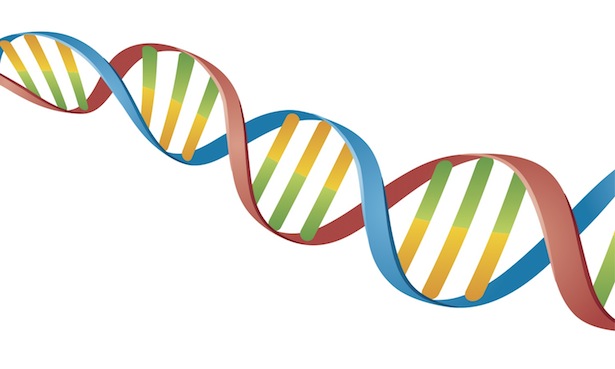Genetic material is the material used in the storage of genetic information in the mitochondria or nuclei of a cell, either deoxyribonucleic acid (DNA) or ribonucleic acid (RNA).
DNA as genetic material.
DNA is the hereditary material found in the cytoplasm of prokaryotic cells (bacteria) and in the nucleus of eukaryotic cells (plants and animals) that determines an organism’s composition. It is found in the nucleus of every cell, and it is exactly same in each of them. It stores so much information, thus highly organized to keep all data safe while allowing easy accessibility to the cell.
DNA composition.
This material is made up of four chemical bases, otherwise called nucleotides, namely:
- Adenine (A)
- Guanine (G)
- Cytosine (C)
- Thymine(T)
Each base is attached to ribose and a phosphate molecule hence the name deoxyribonucleic acid. The chemical bases pair up with one another, A with T and C with G.
DNA structure.
DNA is double-stranded where each strand is held together by a pairing of nucleotides. The double-strand is spirally coiled to form a helix. The chemical bases pair up with one another, A with T and C with G and never cheat on each other. A double-stranded DNA is called a double helix in most cases and resembles a ladder where the sugar and phosphate form sides while the nucleotides represent the rungs on the ladder. These double helixes are wrapped around proteins known as histones and packaged into chromosomes.

Functions of DNA.
Deoxyribonucleic acid has two main functions that are essential in dealing with cellular information. Since it is used in the storage of so much information in the cells, it is highly organized to avoid the tiniest mistakes that may somehow happen. The two main functions of deoxyribonucleic acid are as follows:
- Inheritance-This is the basic principle of genetics which explains the passage of characteristics from one generation to the next. This occurs in all forms of life on planet Earth. Therefore deoxyribonucleic acid is passed from parent to the offspring in all living things. This is a delicate process which requires high accuracy, with minimal errors that could introduce changes to the DNA sequence. A genome has a full complement of DNA in a cell and organized into smaller units called genes that are arranged on chromosomes and plasmids.
- Construction and regulation of proteins– DNA is used to direct and regulate the construction of proteins required in cell growth and reproduction in a specific cellular environment.